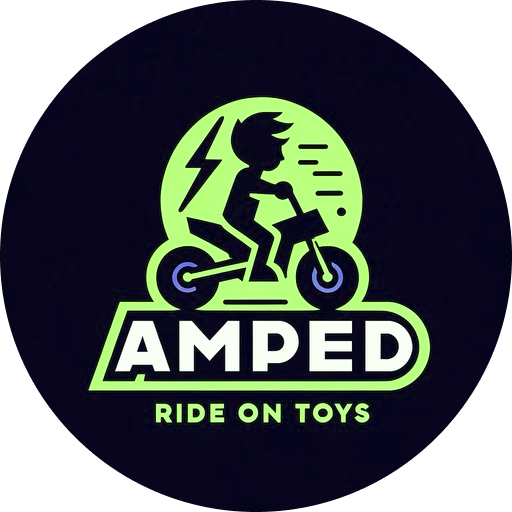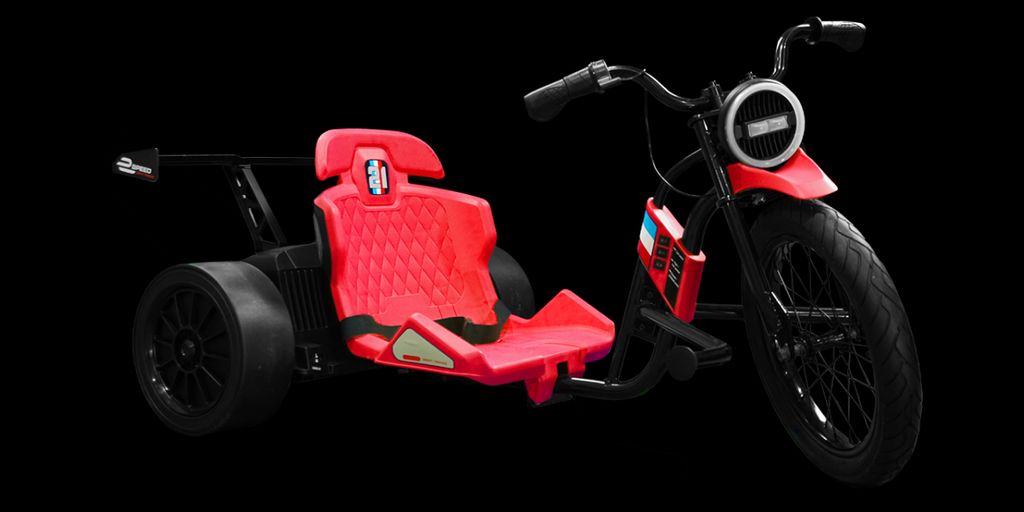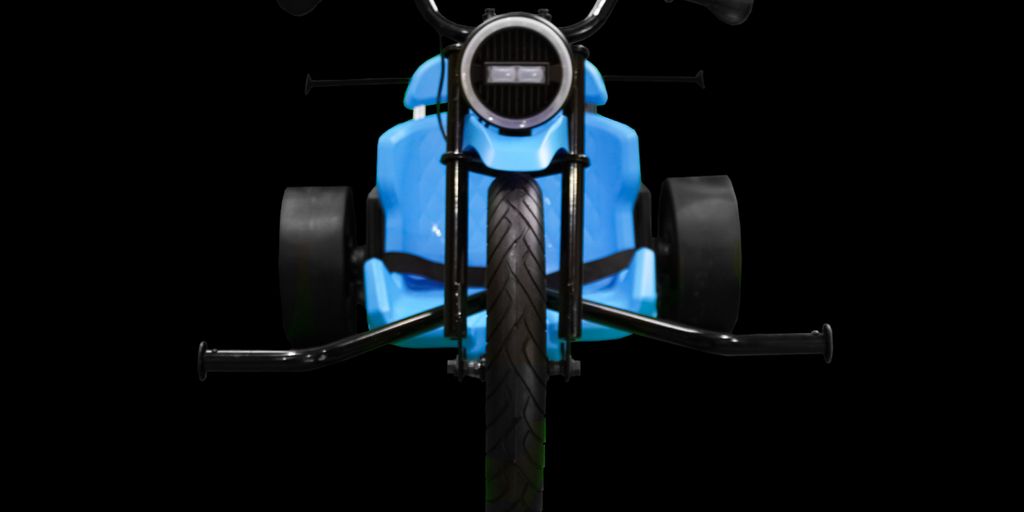So, you're thinking about getting one of those big wheel drift trikes for your kid, huh? They look like a blast, with all that sliding and spinning. But, like anything that goes fast, you gotta wonder: are they actually safe for younger riders? We'll break down what these trikes are all about, what gear you need, how to pick the right one, and where your child can ride them without too much worry. It's all about having fun while keeping everyone in one piece.
Key Takeaways
- Always make sure your child wears a good helmet and other protective gear when riding a big wheel drift trike.
- Pick a big wheel drift trike that fits your child's size and skill level, not just the coolest looking one.
- Find a safe, open area away from cars and people for riding; supervision is a must for young riders.
- Start with basic riding skills and slowly work up to drifting in a controlled spot.
- Keep your big wheel drift trike in good shape by checking tires and keeping it clean to make it last longer and stay safe.
Understanding the Big Wheel Drift Trike
What Exactly is a Big Wheel Drift Trike?
Okay, so what are these things? Basically, a big wheel drift trike is like a regular tricycle, but with a twist. The rear wheels are typically made of a hard, smooth plastic, like PVC, which allows for drifting. They're designed for fun, and for sliding around corners. They're not your grandma's trike, that's for sure!
How Big Wheel Drift Trikes Work
So, how do these trikes actually work? It's all about the rear wheels. Because they're made of a slick material, they lose traction easily. This allows you to initiate a slide, or drift, by leaning into a turn and applying a bit of weight to the rear. The front wheel provides the steering and the power, while the rear wheels are all about the slide. It's a pretty simple concept, but it can take some practice to get the hang of it.
The Thrill of Drifting Explained
What's the big deal about drifting anyway? Well, it's just plain fun! There's something super satisfying about sliding around a corner, feeling the g-force, and maintaining control. It's a bit like snowboarding or skiing, but on three wheels. For young riders, it's a great way to experience a bit of excitement and learn some basic vehicle control skills. Just make sure they're doing it in a safe environment, like a closed course or empty parking lot. If you are blocked from accessing myshopify.com, contact the site owner.
Safety First: Essential Gear for Big Wheel Drift Trikes
Okay, so you're thinking about getting your kiddo a big wheel drift trike? Awesome! They are a blast, but let's talk safety first. It's not just about hoping for the best; it's about making sure they're geared up properly. Think of it like this: a little preparation goes a long way in preventing bumps and bruises, or worse. We want them to have fun, but we really want them to be safe while doing it.
Must-Have Helmets for Young Riders
First things first: the helmet. No ifs, ands, or buts. A good helmet is non-negotiable. It's the single most important piece of safety equipment. Look for a helmet that fits snugly but comfortably. It shouldn't wobble around on their head. Make sure it's certified by a reputable organization like the CPSC (Consumer Product Safety Commission). And remember, helmets aren't one-size-fits-all. Measure your child's head and check the helmet's sizing chart. A properly fitted helmet can be the difference between a minor scare and a serious injury. Don't skimp on this one!
Protecting Knees and Elbows
Okay, next up: knee and elbow pads. These are super important because, let's face it, falls happen. Especially when they're learning to drift! Pads can really cushion the impact and prevent scrapes and bruises. Look for pads that are durable and fit well. They shouldn't be too tight that they restrict movement, but they also shouldn't be so loose that they slide around. Some pads come with adjustable straps, which is a nice feature. Think about getting a set that's specifically designed for kids, as they'll be sized appropriately. Trust me, your kid will thank you later when they take a tumble and walk away unscathed. Consider the best safety gear for your child.
Choosing the Right Footwear
Footwear is another thing that people often overlook, but it's actually pretty important. You want your child to wear closed-toe shoes with good grip. Sneakers or athletic shoes are ideal. Sandals, flip-flops, or bare feet are a big no-no. You need shoes that will stay on their feet and provide some traction. This helps with braking and steering. Plus, it protects their feet from scrapes and cuts. Laces should be tied securely to prevent tripping. Good footwear can make a big difference in their control and stability on the trike.
Remember, safety gear isn't just about preventing injuries; it's about building confidence. When kids feel safe and protected, they're more likely to relax and enjoy the ride. And that's what it's all about, right? Having fun and making memories, safely.
Picking the Perfect Big Wheel Drift Trike for Your Child
Choosing a big wheel drift trike for your kiddo is more than just grabbing the coolest-looking one off the shelf. It's about finding the right fit, features, and ensuring it matches their skill level. Let's break down how to pick a trike that's both fun and safe.
Sizing Up the Big Wheel Drift Trike
Just like shoes, one size definitely doesn't fit all when it comes to drift trikes. Getting the right size is super important for control and safety. A trike that's too big can be hard to handle, while one that's too small can be uncomfortable and unstable. Measure your child's height and inseam. Many manufacturers provide sizing charts based on these measurements, so use them! Also, consider the adjustability of the seat. A trike with an adjustable seat can grow with your child, giving you more bang for your buck.
Features to Look For in a Safe Trike
Not all drift trikes are created equal. Some come with features that seriously boost safety. Here's what to keep an eye out for:
- Brakes: Reliable brakes are a must. Look for easy-to-reach and responsive brakes. Disc brakes are generally more effective than band brakes, especially in wet conditions.
- Frame: A sturdy frame is key. Steel frames are durable, but aluminum frames are lighter, which can make the trike easier to maneuver. Make sure the frame is well-welded and free of sharp edges.
- Seat: A comfortable and supportive seat will help your child stay in control. Look for a seat with good padding and a high back.
- Wheels: The rear wheels are what make drifting possible, but the front wheel is what provides steering and stability. A wider front tire offers better grip and control.
Don't skimp on safety features. A few extra dollars spent on a well-designed trike can make a huge difference in your child's safety and enjoyment.
Age and Skill Level Considerations
Big wheel drift trikes aren't for everyone. Age and skill level play a big role in determining if a child is ready to ride one safely. Start with the manufacturer's age recommendations, but also consider your child's coordination, balance, and ability to follow instructions. If your child is new to riding, start them off with a smaller, more stable trike and let them work their way up. Always supervise young riders, and make sure they're wearing appropriate safety gear. If your child needs a Cloudflare Ray ID, make sure to check their browser.
Where to Ride Your Big Wheel Drift Trike Safely
Finding the Ideal Riding Spot
Okay, so you've got your kiddo all geared up and ready to drift. Awesome! But where exactly should they be drifting? You can't just let them loose anywhere. Think smooth, paved surfaces. Empty parking lots (with permission, of course!) are great when businesses are closed. Smooth bike paths can work, but make sure they aren't crowded. The goal is a wide-open space free from obstacles like cars, pedestrians, and rogue squirrels.
Avoiding Busy Areas and Traffic
This one seems obvious, but it's worth repeating: stay away from traffic. Seriously. No roads, no driveways, no busy sidewalks. Even if your child is a drifting prodigy, cars are bigger and faster. It's just not worth the risk. Look for areas that are specifically designed for recreational activities, like parks with paved trails or community centers with open spaces. Safety is the name of the game, and that means keeping a safe distance from anything with wheels and an engine.
Supervision is Key for Young Riders
No matter how skilled your child is, always supervise them. Little ones can get distracted easily, and even older kids might take unnecessary risks when they think no one is watching. Be there to offer guidance, encouragement, and, most importantly, to make sure they're staying safe. It's also a good idea to set clear boundaries and rules before they start riding. Where are they allowed to go? What kind of tricks are they allowed to try? Clear expectations can prevent accidents and keep everyone happy. And hey, while you're at it, why not Follow Amped Ride on Toys on Instagram for more tips and tricks?
Supervision isn't just about preventing accidents; it's also about teaching responsibility. By being present and engaged, you're showing your child that you care about their safety and that you're invested in their enjoyment of the sport. This can help them develop a sense of self-awareness and make better decisions on their own in the future.
Learning the Ropes: Big Wheel Drift Trike Riding Tips
Starting Slow and Building Confidence
Okay, so you've got your awesome big wheel drift trike. Now what? Don't just jump on and expect to be a drifting pro right away! The key is to start super slow. Find a nice, flat, open space – a park path or an empty parking lot works great. The goal here is to get a feel for the trike. Practice just pushing yourself along with your feet, getting used to the steering, and how it responds to your movements. This initial phase is all about building confidence.
- Start with short rides.
- Focus on balance.
- Get comfortable with the feel of the trike.
Mastering Basic Steering and Braking
Steering and braking are your bread and butter. Once you're comfortable just rolling around, start practicing turning. Lean slightly into the turn, but not too much! Remember, these trikes are designed to drift, so you don't want to overcorrect. Braking is usually done by dragging your feet, so practice applying gentle pressure to slow down gradually. Slamming on the brakes (or your feet) can cause you to lose control, especially when you're just starting out. Practice makes perfect here, so dedicate some time to getting these basics down.
Practicing Drifts in a Controlled Environment
Alright, now for the fun part: drifting! But before you go all out, find a safe, controlled environment. A smooth, slightly inclined surface is ideal. Start by building up a little speed, then gently turn the handlebars while shifting your weight. The rear wheels should start to slide, initiating the drift. The trick is to maintain control by adjusting your steering and weight. Don't be discouraged if you spin out at first – it happens to everyone! Keep practicing, and you'll get the hang of it. Remember to wear your protective gear!
It's important to remember that learning to drift takes time and patience. Don't push yourself or your child too hard, and always prioritize safety. With practice and the right approach, you'll be drifting like a pro in no time!
Maintaining Your Big Wheel Drift Trike for Longevity
Okay, so you've got your kiddo set up with their awesome big wheel drift trike. Now, let's talk about keeping that thing rolling smoothly for as long as possible. A little bit of care goes a long way, and it's way cheaper than having to buy a new one every season! Plus, it's a good way to teach your kid about responsibility and taking care of their stuff. Let's dive in!
Regular Tire Checks and Inflation
First things first: the tires. These are what take the most abuse, especially during those sweet drifts. Make it a habit to check the tire pressure before each ride. Underinflated tires can make it harder to drift and can wear out much faster. Overinflated tires can be dangerous and cause a blowout. Use a simple tire pressure gauge – you can grab one at any auto parts store or even most big box stores.
- Check for cuts, cracks, or bulges in the tire. Replace if needed.
- Inflate to the recommended PSI (usually printed on the tire sidewall).
- Consider the type of tires you have. Some tires are more durable than others. If you are looking for replacements, consider durable tire options.
Keeping the Frame and Components Clean
Dirt, mud, and grime are the enemies of moving parts. After a particularly messy ride, give the trike a good wipe-down. A damp cloth and some mild soap are usually all you need. Pay special attention to the wheels, axles, and any other moving parts. You can use a brush to get into those hard-to-reach spots.
- Wipe down the frame after each use.
- Use a degreaser on the chain (if applicable) and re-lubricate.
- Check for any loose bolts or screws and tighten them up.
Keeping the trike clean not only makes it look better, but it also helps prevent rust and corrosion, which can significantly extend its lifespan. Plus, it's easier to spot potential problems when the trike is clean.
When to Seek Professional Help
Sometimes, things go beyond a simple wipe-down or tire inflation. If you notice any of the following, it's time to take the trike to a professional:
- Cracked or bent frame
- Wobbly wheels that you can't fix by tightening bolts
- Brake issues that you can't resolve
Trying to fix these things yourself without the right tools or knowledge could make the problem worse, or even create a safety hazard. A local bike shop or mechanic can diagnose the issue and make the necessary repairs. Don't hesitate to seek professional assistance when needed. It's better to be safe than sorry!
Want your big wheel drift trike to last a long time? Taking good care of it is super important! A little bit of cleaning and checking things out regularly can make a huge difference. For all the best tips and tricks to keep your trike in top shape, head over to our website!
Conclusion
So, what's the deal with big wheel drift trikes for young riders? It's not a simple yes or no answer, you know? They can be a lot of fun, for sure, and give kids a real thrill. But like anything with wheels, there are things to think about. Making sure kids wear their helmets and other safety stuff is a big one. And picking the right spot to ride, away from cars and busy places, is super important too. It really comes down to being smart about it. If you take the right steps and keep an eye on things, these trikes can be a cool way for kids to get outside and have a blast. Just remember, safety first, always!
Frequently Asked Questions
What exactly is a big wheel drift trike?
Big wheel drift trikes are special three-wheeled bikes with a big front wheel and two smaller, slick back wheels. They're built for sliding and spinning sideways, which is called drifting. It's a fun ride that gives you a different kind of thrill than a regular bike.
How do big wheel drift trikes work?
These trikes work by letting the back wheels lose grip easily. When you pedal hard and turn, the slick rear wheels slide out, letting you drift. It's all about controlling that slide to make cool turns and spins.
What's so fun about drifting?
Drifting on a big wheel trike means intentionally sliding the back end of the trike while turning. It's a bit like sliding on ice, but you're in control. The thrill comes from the speed and the feeling of gliding sideways, which can be really exciting for riders.
What safety gear do I need for a big wheel drift trike?
When riding a big wheel drift trike, it's super important to wear a helmet. You should also have knee and elbow pads to protect your joints if you fall. Wearing closed-toe shoes with good grip is also a smart idea to keep your feet safe and help you control the trike.
How do I pick the right big wheel drift trike for my child?
To find the right size trike, make sure your child can comfortably reach the pedals and the handlebars without stretching too much. The trike shouldn't be too big or too small. Look for trikes with strong frames and good brakes. Adjustable seats are a plus so the trike can grow with your child.
Where are the safest places to ride a big wheel drift trike?
The best places to ride are flat, open areas away from cars and people. Empty parking lots or smooth, paved paths in parks are good choices. Always avoid busy streets, hills, or places with lots of obstacles. And remember, a grown-up should always be watching young riders to make sure they're safe.



Leave a comment
This site is protected by hCaptcha and the hCaptcha Privacy Policy and Terms of Service apply.